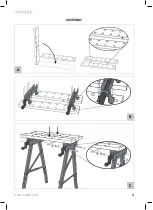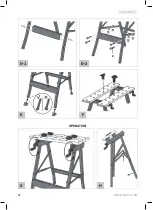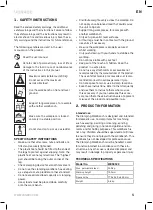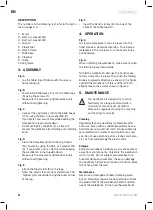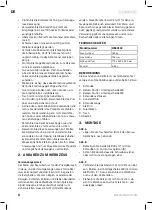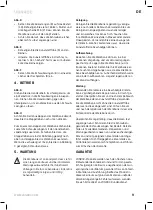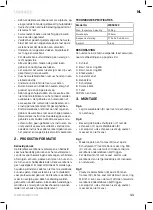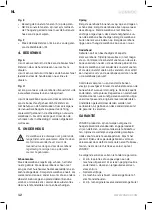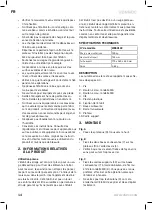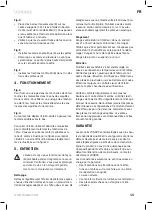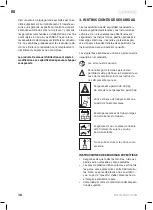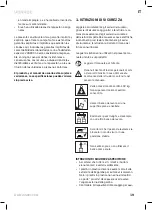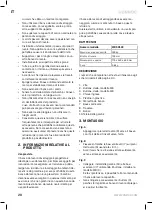
6
EN
WWW.VONROC.COM
DESCRIPTION
The numbers in the following text refer to the pictu-
res on pages 2-4.
1. Screw
2. Bolt, nut, washer M6
3. Bolt, nut, washer M8
4. Wrench
5. Plastic foot
6. Bench clamp
7. Slide base
8. Crossbar
9. Table
10. Leg frame
3. ASSEMBLY
Fig. A
• Lay the Table tops (9) down with the screw
holes facing up.
Fig. B
• Fasten both Slide bases (7) onto the Table tops
(9) using the screws (1).
• Make sure the screws are tightened securely,
without overtightening.
Fig. C
• Connect the Leg frames (10) to the Slide bases
(7) by using the Bolt, nut, washer M8 (3).
If you prefer, you can do this while keeping the
workbench turned upside down.
• Do not overtighten the Bolts (3), as this will
prevent the workbench from folding and unfolding
easily.
Fig. D
• Place the Crossbars (8) onto the Leg frames
(10). Fasten by using the Bolt, nut, washer M6
(2). If you prefer, you can do this while keeping
the workbench turned upside down.
• Make sure the screws are tightened securely,
without overtightening.
Fig. E
• Attach the Plastic feet (5) to the legs.
• Note: The plastic feet are not symmetrical. The
‘highest’ part should be facing the outer corner
of the leg.
Fig. F
• Insert the Bench clamps (6) into one of the
holes of the Table tops (9).
4. OPERATION
Fig. G
To clamp a workpiece in the vice jaws, turn the
hand cranks in clockwise direction. To unclamp a
workpiece in the vice jaws, turn the hand cranks
anticlockwise.
Fig. H
When unfolding the workbench, make sure to push
the folding braces downwards.
To fold the workbench, first use the hand cranks
to fully clamp the vice jaws. Then push the folding
braces in upwards direction as shown in the figure
and fold the workbench. If this is difficult to do,
slightly loosen the screws shown in figure C.
5. MAINTENANCE
The workbench is designed to function
faultlessly for a long period and with a
minimum of maintenance. Extend its
lifespan by regularly cleaning the machine
and treating it correctly.
Cleaning
Regularly clean the workbench, preferably after
each use. Clean with a suitable proprietary house-
hold cleaner and a soft dry cloth. Do not submerge
your workbench in water or any liquid for any rea-
son. Do not use solvents (petrol, alcohol, ammonia,
etc.) as they will damage the plastic parts.
Storage
Store your workbench indoors in a dry environment
away from contaminants. Only store the workbench
when it is dry. Do not subject your workbench to
humid or damp environments, these can damage
the workbench. Store out of reach of children. Store
flat or hang from the wall.
Maintenance
Never use a damaged or broken clamping work-
bench. Temporary repairs are not permitted. Check
the plastic feet of the workbench before and after
use of the workbench. Do not use the workbench



